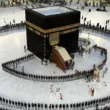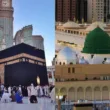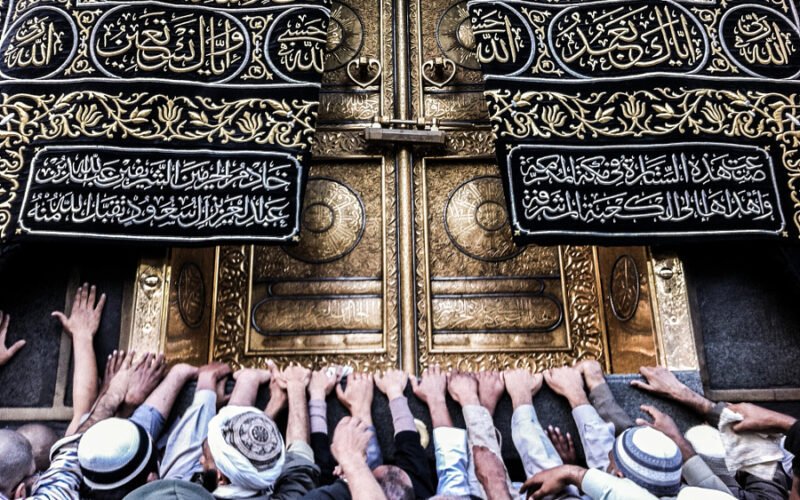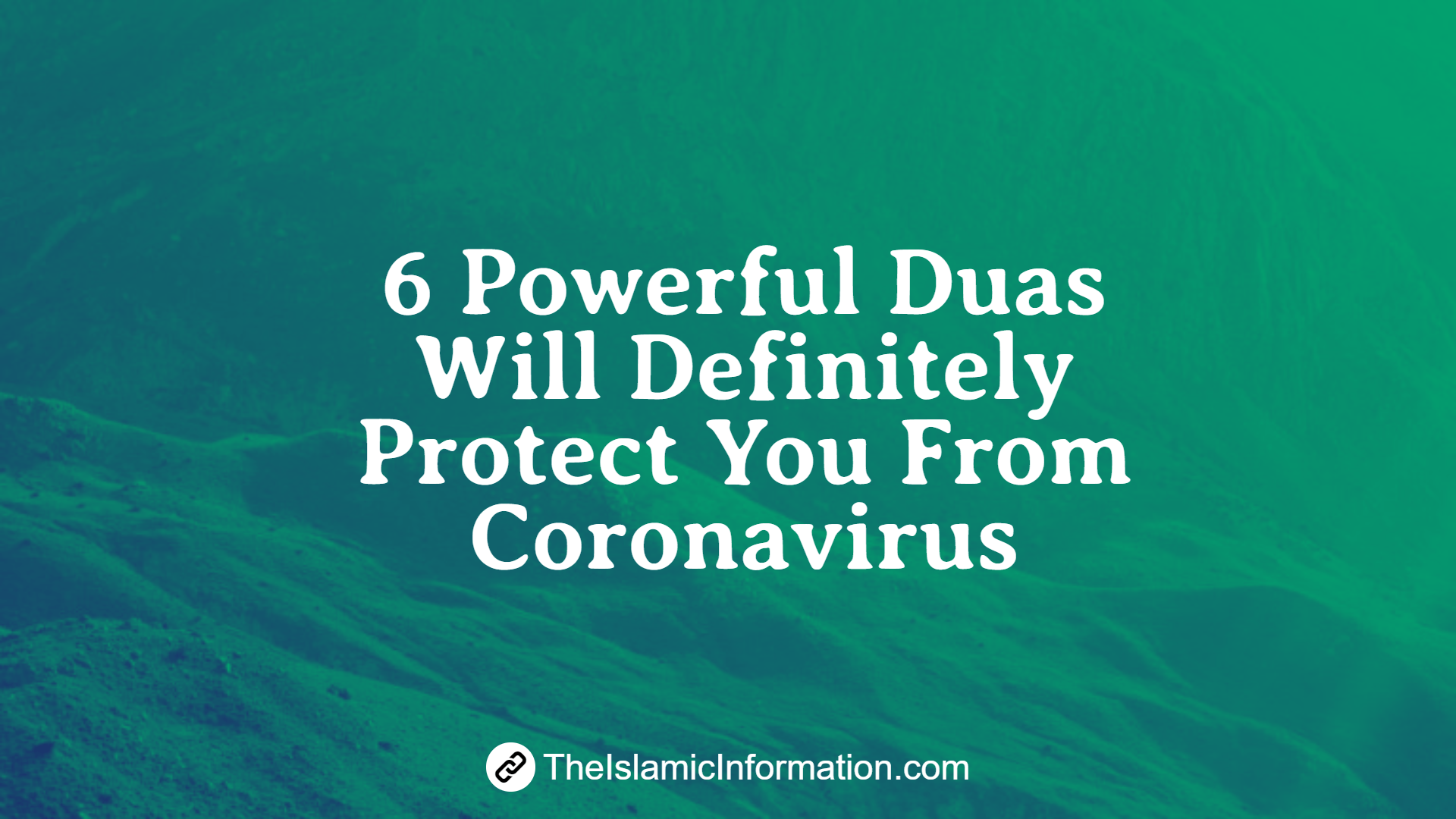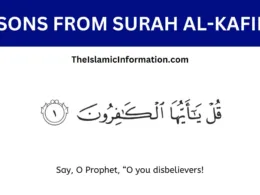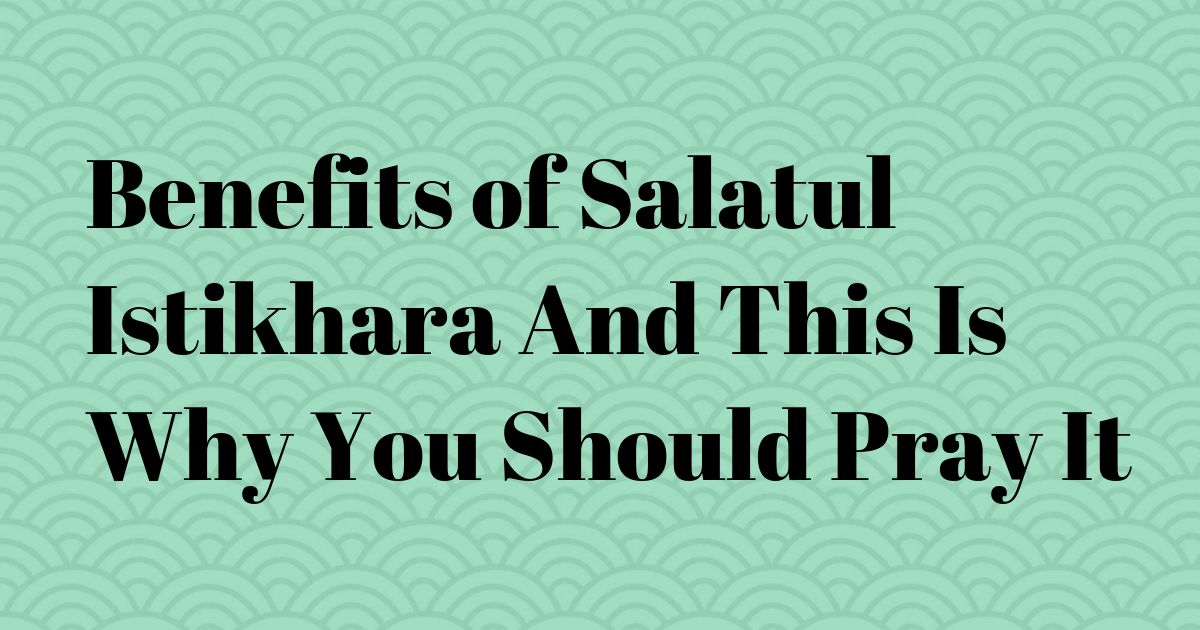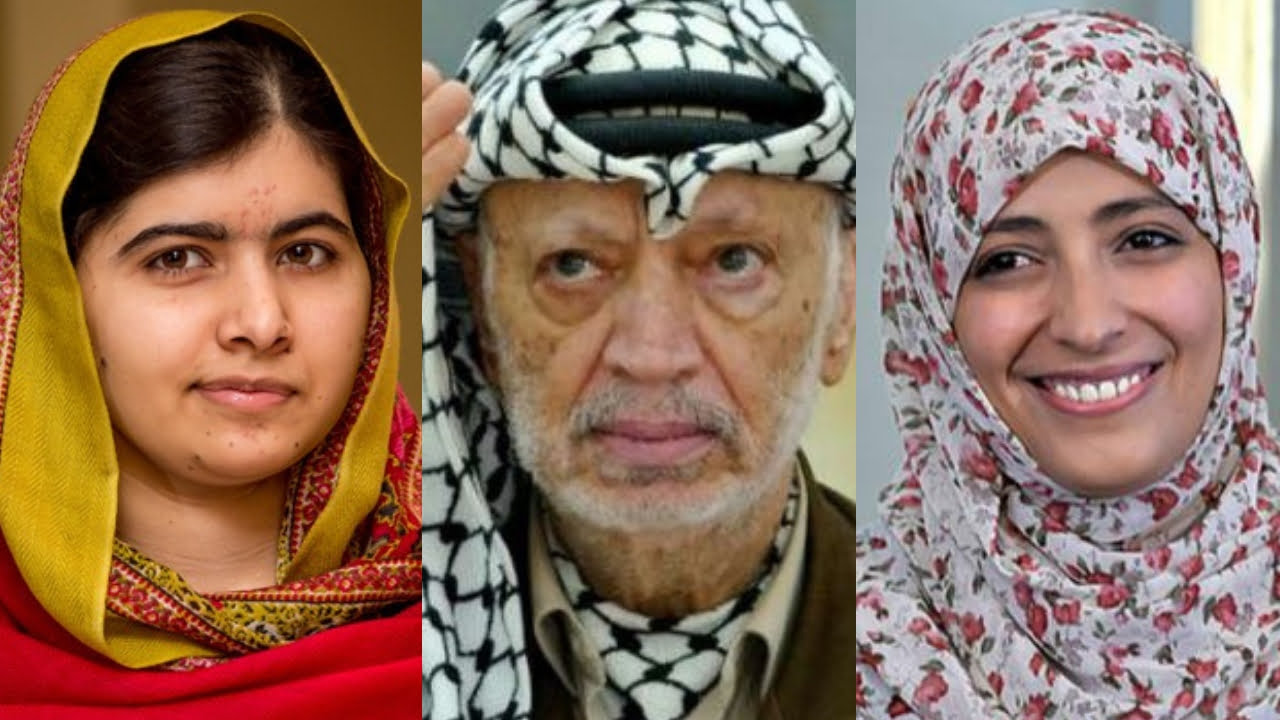In this article, we delve into the meanings behind ten specific inscriptions on the Kaaba, exploring the verses of the Quran that they represent and the spiritual depth they add to this holiest of Islamic landmarks.
The Kabah situated in Makkah is a sacred construction that holds immense significance in Islam. The exterior of the Kabah cover carries profound Quranic ayahs on its draped black velvet exterior.
1. At the Centre (Quran 48/27)
At the top right of the Kaaba, an ayat from Quran 48:27 declares the fulfillment of the dream where Prophet Muhammad (PBUH) dreamed of performing Umrah.
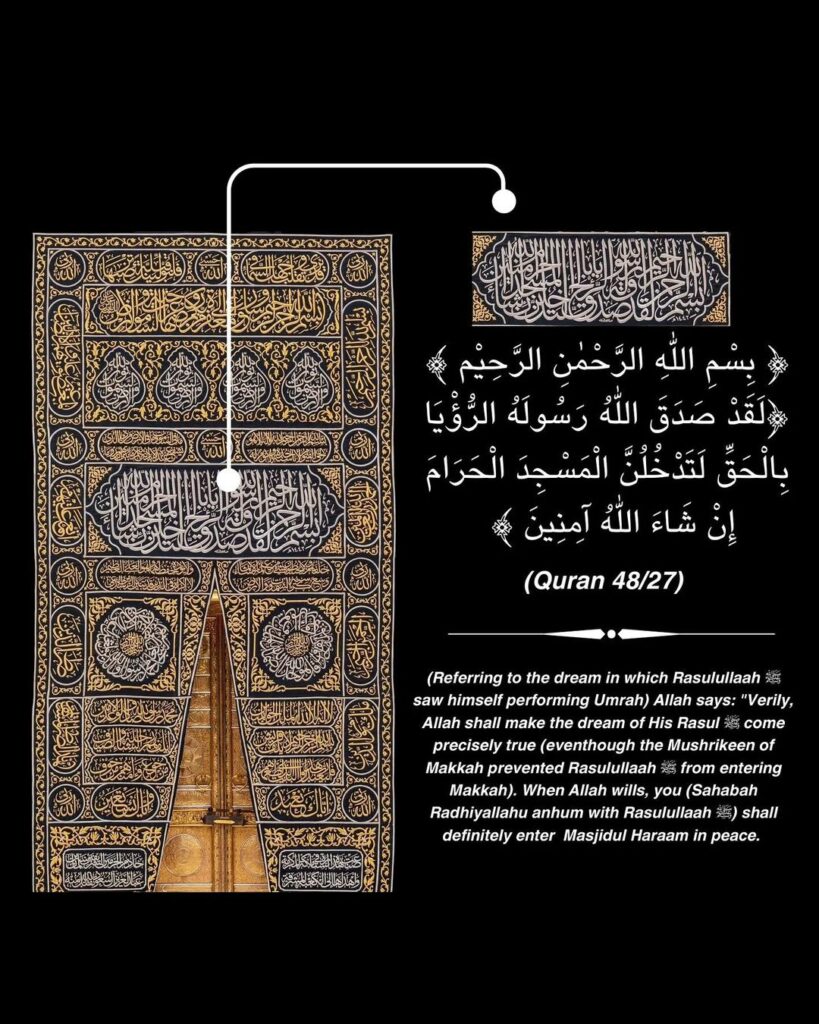
Despite the opposition from the unbelievers of Makkah, Allah assures that, in due time, believers will enter Masjid Al Haram in peace. The ayat underlines the importance of remaining steadfast during hard times, assuring believers that obstacles are temporary.
2. In a circular Pattern on the Right (Quran 112/1-4)
On the circular pattern, the verses from Quran 112:1-4 proclaim the oneness and uniqueness of Allah. The ayat emphasizes that Allah is independent, has no son, and is unequaled.
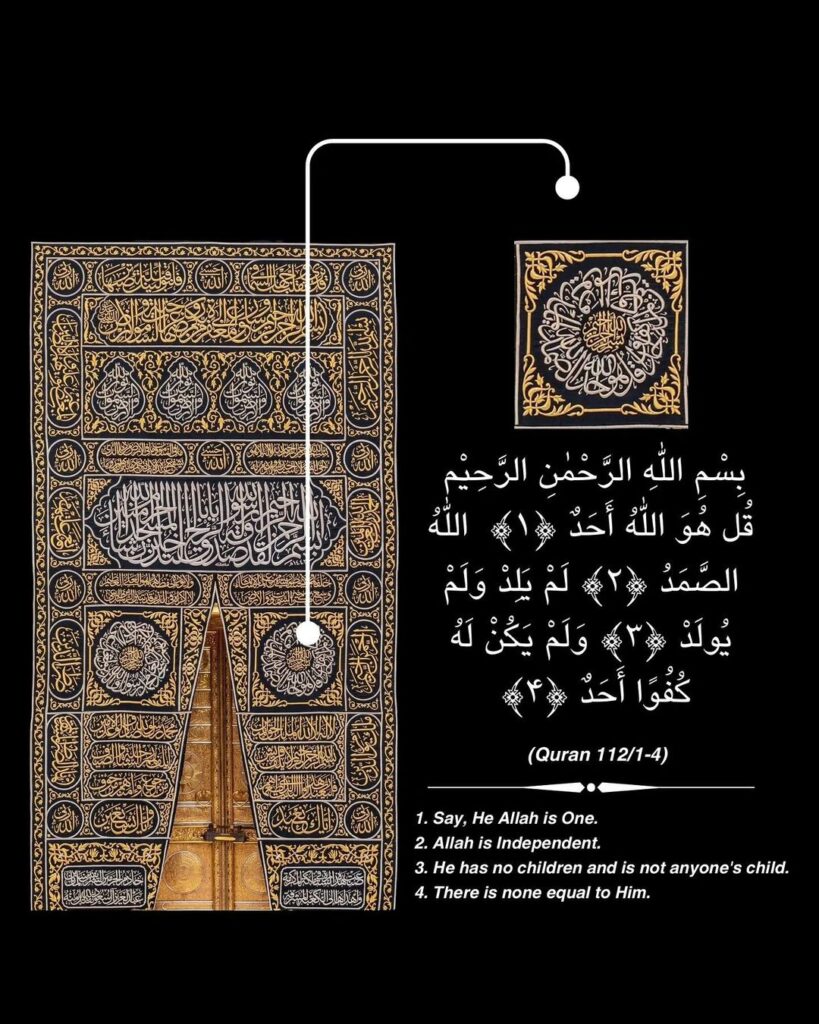
The declaration in this ayat that is Surah Al Ikhlas that Allah begets not, nor is He begotten, and there is none comparable unto Him establishes a clear understanding of the uniqueness and incomparability of the Divine Being.
3. In a Circular Pattern on the left (Quran 48/29)
In a circular pattern around the Kaaba, Quran 48:29 emphasizes the strength and compassion of Prophet Muhammad and his companions. It describes their firm stance against disbelievers and their compassion towards one another.
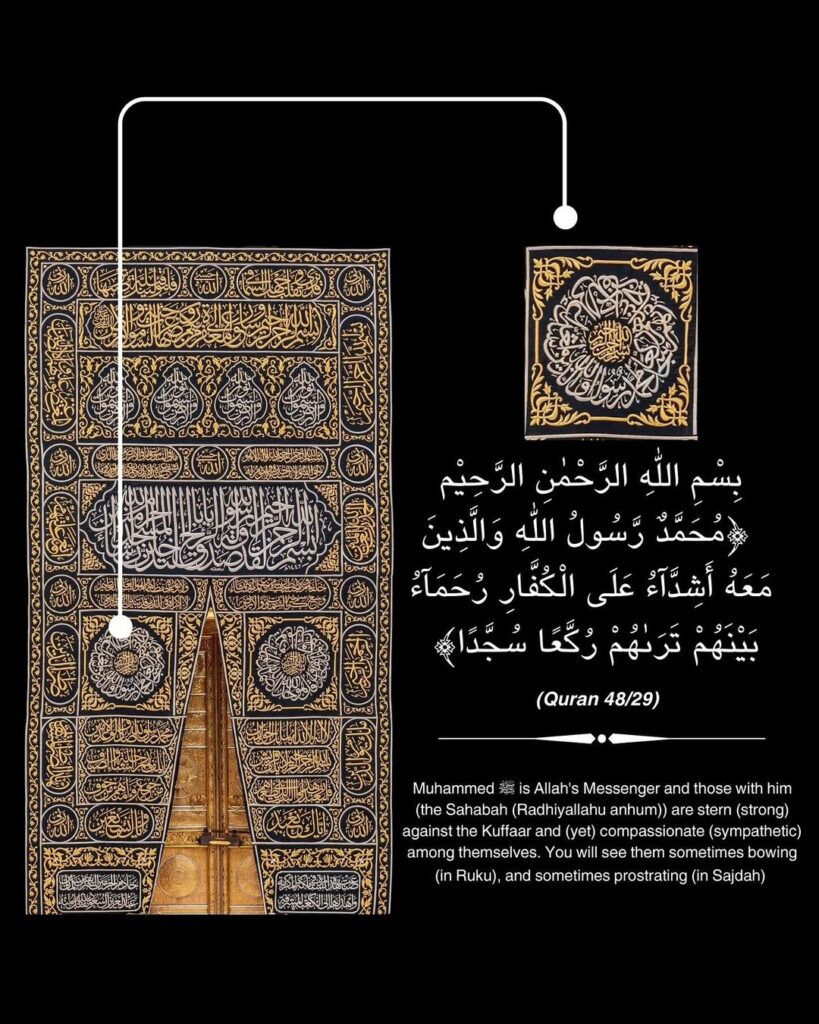
The mention of their physical postures during prayer, such as bowing and prostrating, underscores the sincerity and devotion inherent in their worship.
Revealed during a time of strength among believers, this Ayat teaches balance. It emphasizes the importance of maintaining strength in faith while fostering empathy with Muslim brothers and sisters.
4. Below the circular figure on the right and above the circular Pattern on the left (Quran 24/35)
Above the Circular pattern on the left, a prominent ayat cites Quran 24:35, highlighting Allah as the illuminator of the heavens and the earth.
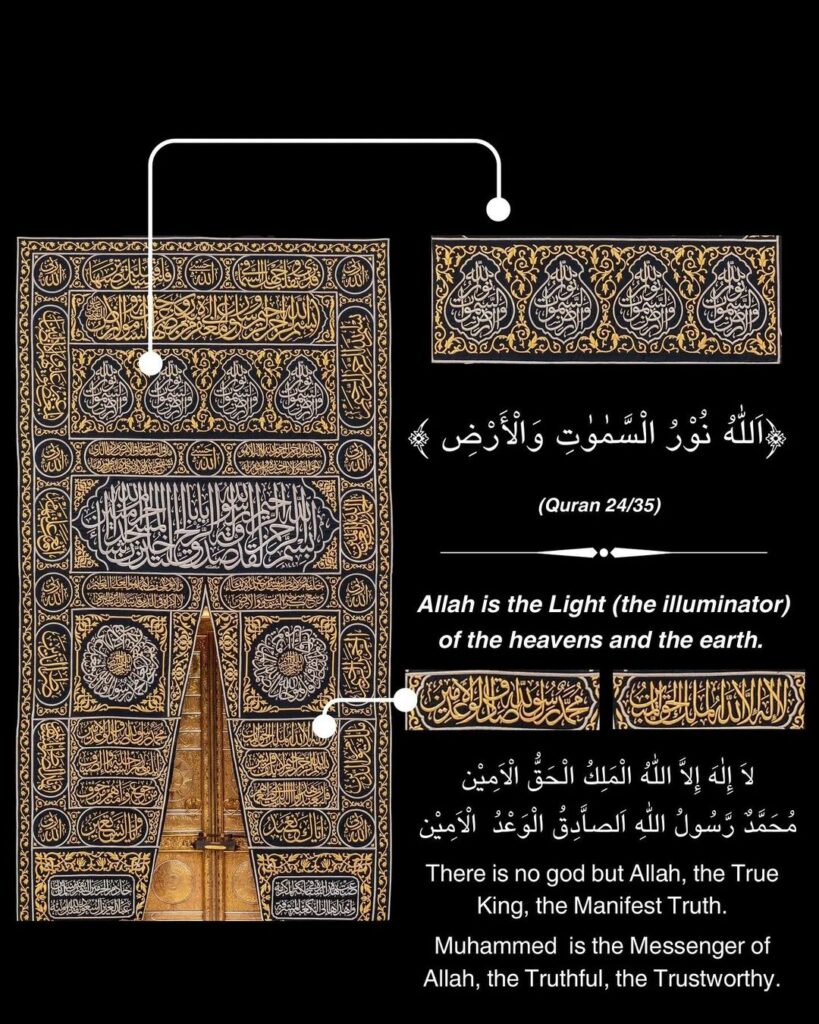
Moreover beneath the circular pattern on the right the ayat declares the truth of Allah’s oneness and affirms the prophethood of Muhammad as the trustworthy messenger.
The Quranic verse underlines the importance of the last messenger of Islam as a guiding light of truth for humanity.
5. Along the Upper Section (Quran 2/144)
Inscribed along the upper section, Quran 2:144 refers to the shifting of the Qibla. It acknowledges Prophet Muhammad (PBUH) frequently gazing towards the sky, anticipating Allah’s command to change the Qibla back to the Kaaba.
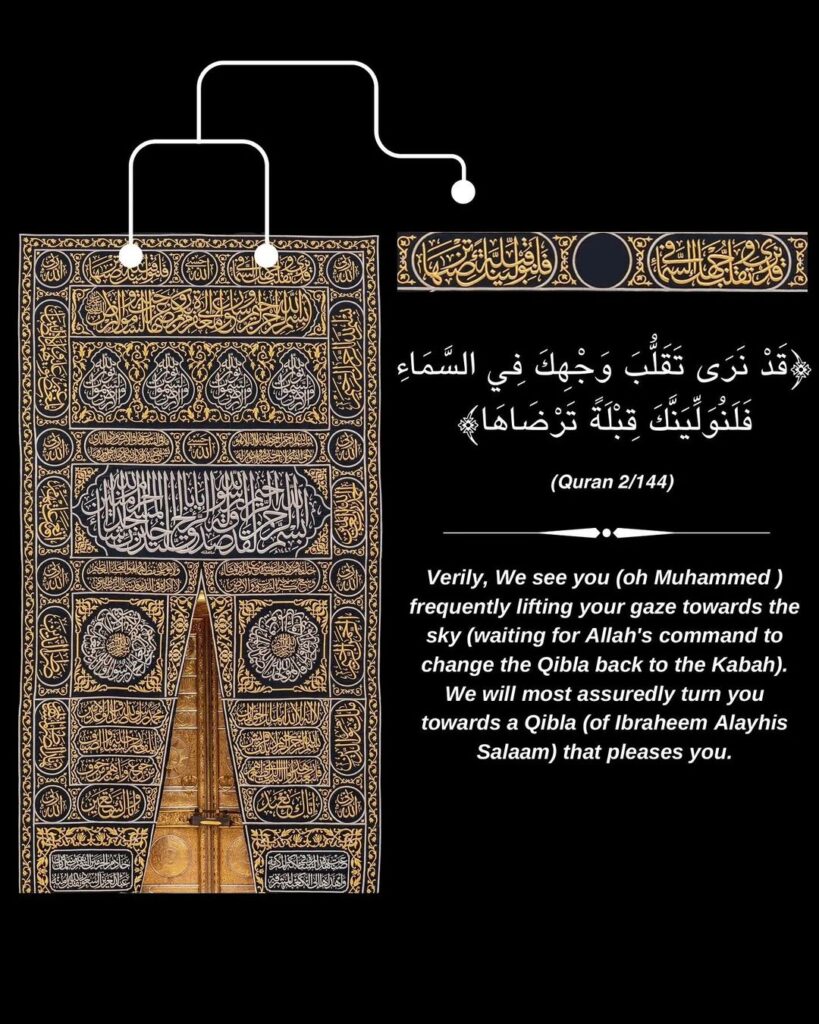
In this verse, a pledge is made that a Qibla aligned with the tradition of Prophet Ibrahim (Abraham) will be established, ultimately bringing satisfaction to Prophet Muhammad (peace be upon him).
6. Along the Upper Long Section (Quran 3/134)
In the upper long section, Quran 3:134 encourages believers to hasten towards forgiveness, and Jannah prepares for the righteous.
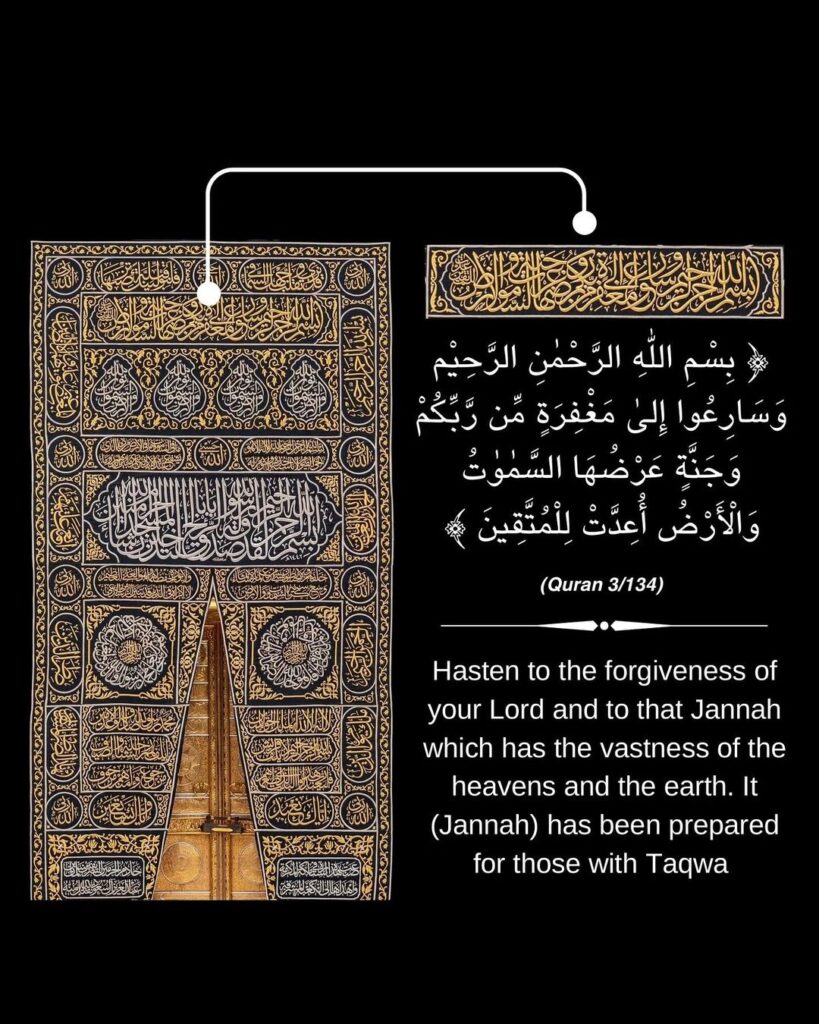
The inscription points out Allah’s promise of the reward for those with Taqwa and the righteous ones, urging believers to strive for both forgiveness and paradise.
7. On the East Side (Quran 2/255)
On the southern facade, Quran 2:255 is Ayat ul Kursi, which asserts the greatness of Allah.
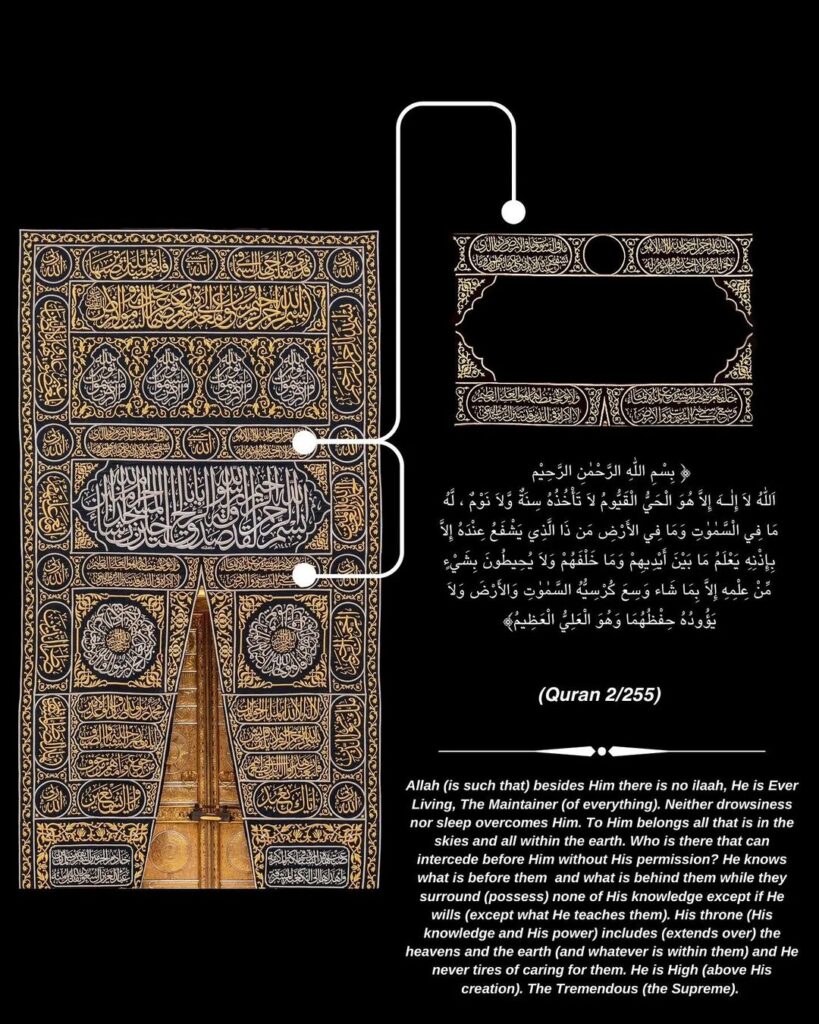
Ayat al-Kursi beautifully describes the attributes of Allah, affirming His eternal existence, comprehensive knowledge, and sovereign authority over the heavens and the earth.
8. On the right side strip (Quran 1/1–7)
On the northern facade, Quran 1:1–7 commences with the opening verses of Surah Al-Fatiha, praising Allah as the Rabb, the Most Compassionate, and the Most Merciful. Surah Al-Fatiha is a dua recited while praying.
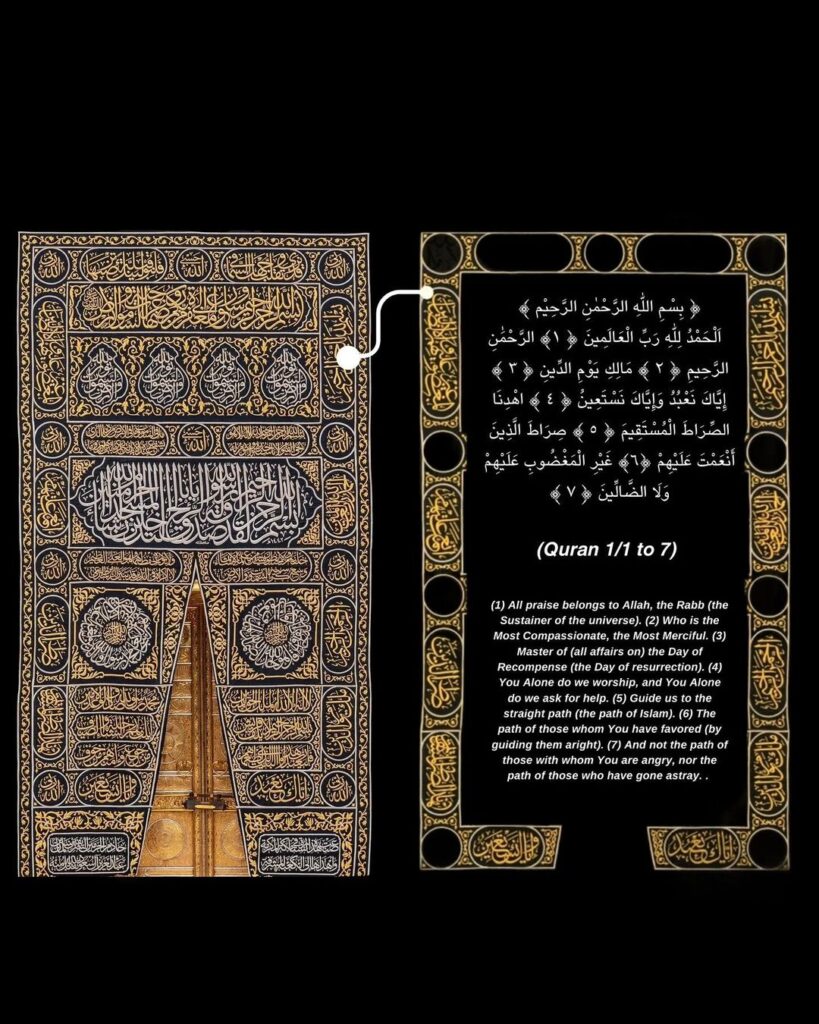
The Surah praises Allah, acknowledging His mercy and seeking guidance on the straight path. The supplication includes a plea for assistance in worshiping Allah alone.
9. Along the lower side, below the circular pattern on the right (Quran 106/1–4)
Along the western side, Quran 106:1-4 reminds the Quraish of their blessings, urging them to express gratitude and worship Allah, the Rabb of the Kaaba.
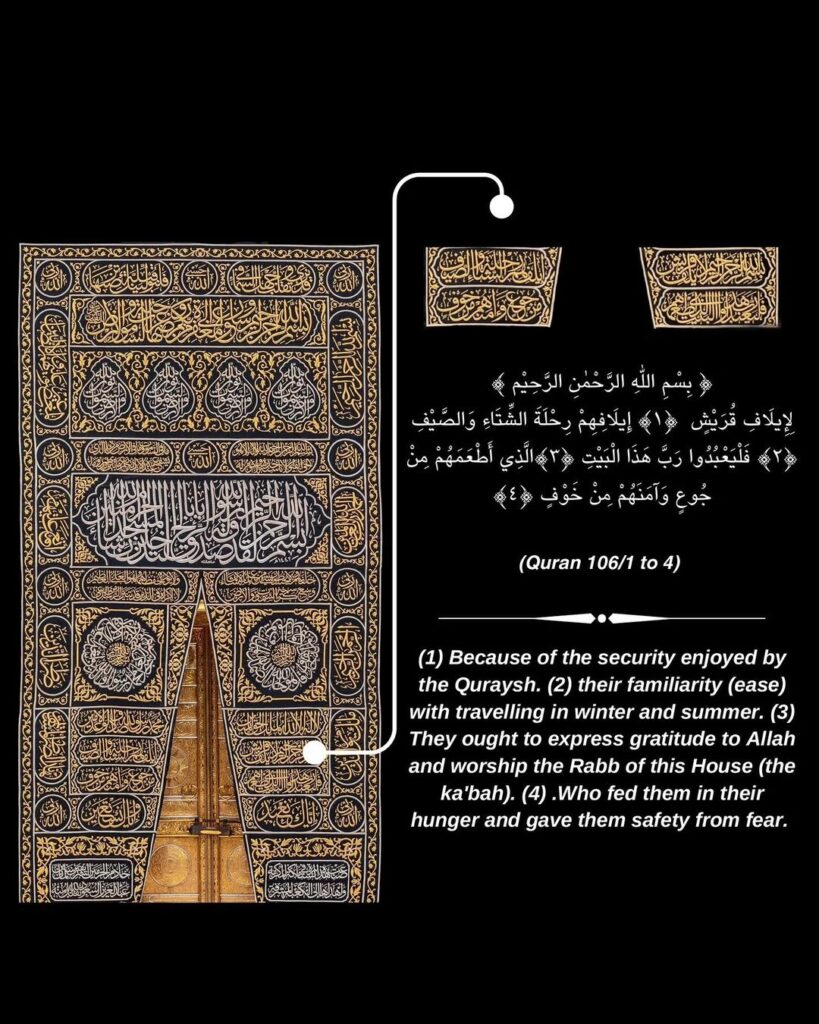
These verses serve as a poignant reminder to the Quraysh tribe of the blessings bestowed upon them by Allah, including security, ease of travel, and provisions during times of hunger and fear.
10. Inscribed Near the Base (Non-Quranic Text)
Near the base of the Kaaba, a non-Quranic inscription notes the origin of the Kaaba’s covering, produced in Makkah Al Mukarramah.
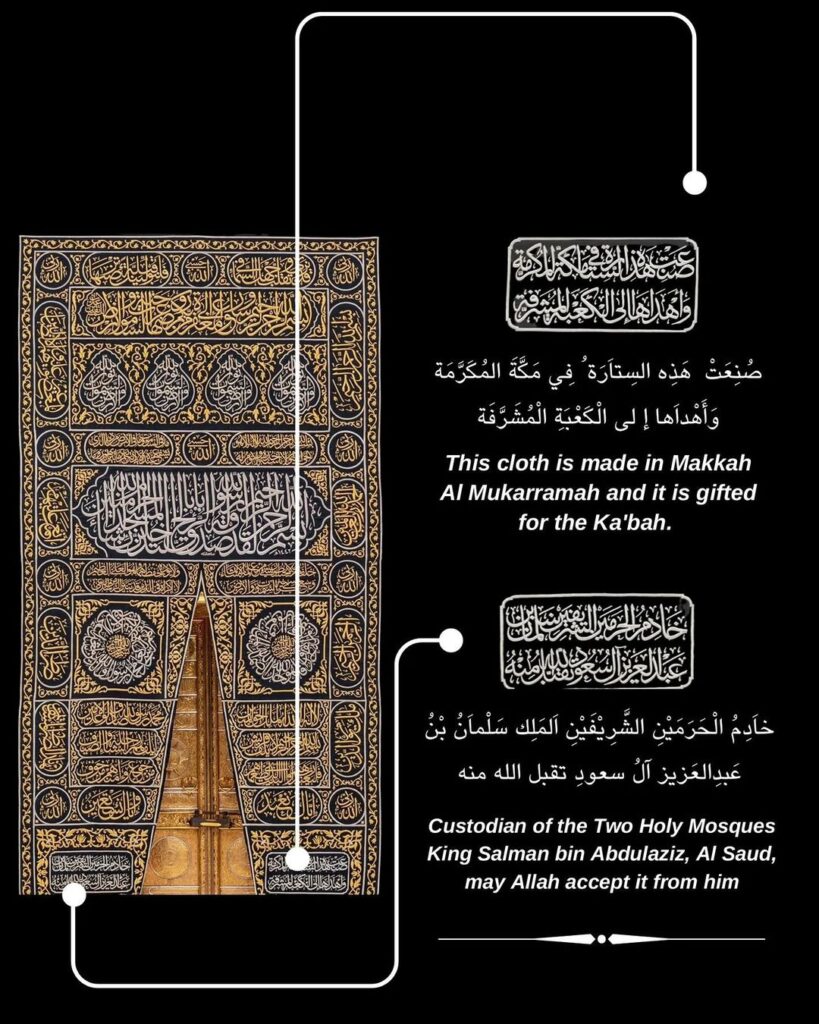
It expresses a gift for the Kaaba from the Custodian of the Two Holy Mosques, King Salman bin Abdulaziz Al Saud, coupled with a heartfelt prayer for its acceptance by Allah, recognizing the sacred significance of this gift.
Subscribe to our channels on WhatsApp, Google News, Facebook and Instagram.Discover more from The Islamic Information
Subscribe to get the latest posts sent to your email.



